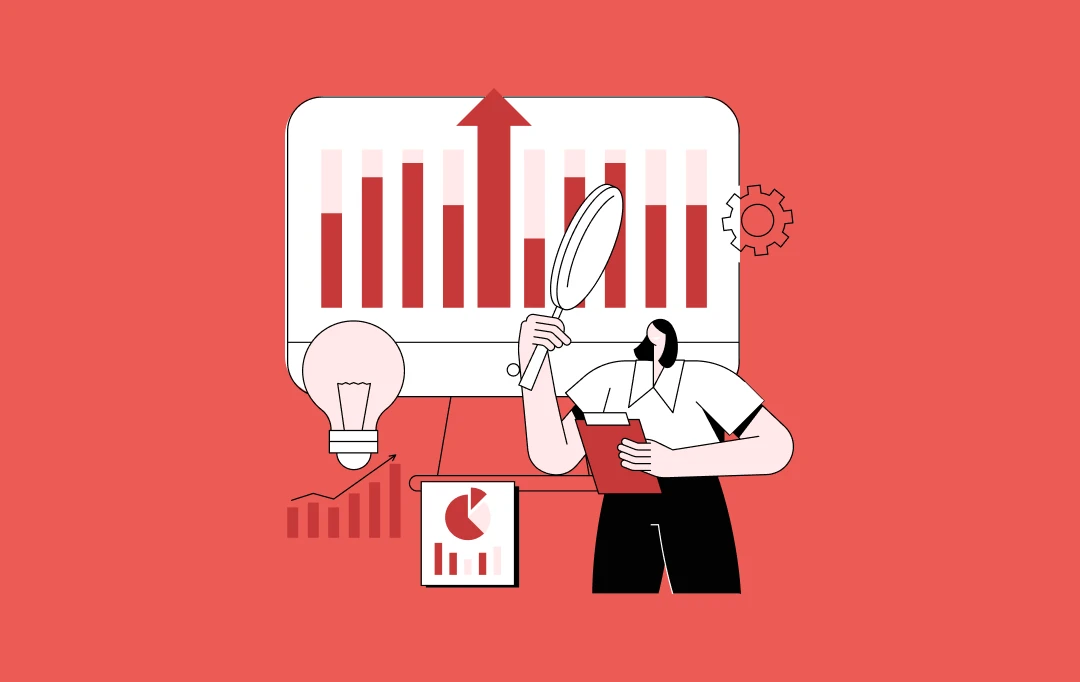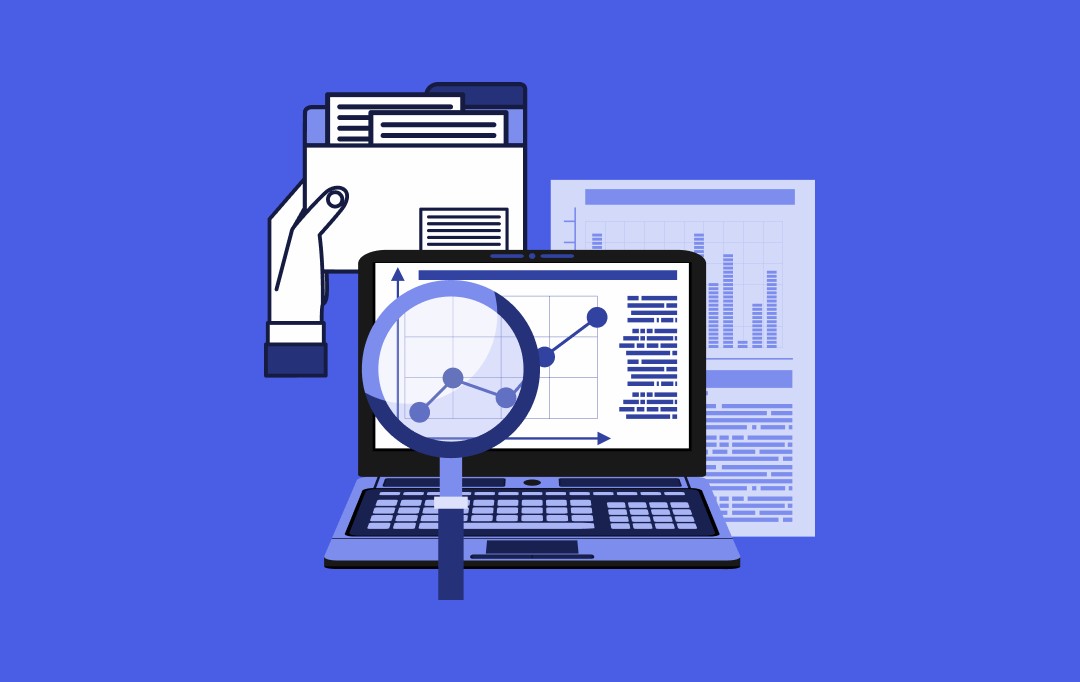- Business Opportunities of Data Analytics in the Sports Industry
- Performance Optimization
- Injury Preventions and Health Management
- Recruitment and Scouting
- Ticket Pricing and Revenue Optimization
- Merchandising and Product Development
- Sponsorship and Marketing Opportunities
- Challenges During the Implementation of Analytics in Sports
- Data Quality & Availability
- Resistance to Change
- Cost Consideration
- Communication and Collaboration
- Exploring Analytics Applications Across Sports
- Final Words
- FAQs
In today’s fast-paced landscape, companies constantly seek innovative and strategic methodologies to stay ahead of the curve. One such avenue that has proven to be a transformative force is analytics.
As per the report of Fortune Business Insights, the global sports analytics market is on an upward trajectory, forecasted to reach from $3.78 billion in 2023 to $22.13 billion by 2030, showing an impressive 28.7% CAGR.
The stats above demonstrate that sports analytics is valuable, taking center stage in the sports industry and allowing businesses to enhance game strategies and performance.
Successful sports management requires a holistic and strategic understanding of diverse operations, both on and off the field, in various sporting contexts. Hence, businesses leverage extensive analytical techniques for individual and team sports to support business decisions.
With the assistance of sports analytics, athletes, coaches, and management officials improve the quality of play, revenue, and injury prevention.
Additionally, state-of-the-art technologies such as AI and machine learning create immense opportunities for the growth of the sports analytics market.
This blog post aims to provide extensive and valuable information consisting of business opportunities and challenges of implementing analytics.
So, let’s uncover key considerations for a seamless transition.
Business Opportunities of Data Analytics in the Sports Industry
Implementing data analytics in the sports industry creates a range of business opportunities, assisting in delivering valuable insights for teams, organizations, and stakeholders. Here are some of the key applications of data analytics in sports:

Performance Optimization
Performance optimization in sports through data analytics consists of extensive analysis of player as well as team metrics to boost overall effectiveness. Leveraging data-driven insights enables teams to tailor training programs to individual strengths and weaknesses. For example, holistic and strategic statistical analysis of player movements and fitness levels aids coaches in determining areas of improvement. Real-time monitoring is highly advantageous in providing feedback and allowing dynamic adjustments during training sessions.
Injury Preventions and Health Management
The performance and longevity of athletes are dependent on holistic health management as well as injury prevention. Leveraging data analytics in sports allows a dynamic stance in comprehending and reducing potential health risks.
Data analytics in the sports industry provide positive workload management and continuous surveillance, allowing coaches to create personalized training programs.
With the assistance of data-driven insights, it’s possible to prioritize athletes’ long-term well-being by boosting performance.
Recruitment and Scouting
Identifying and acquiring top-tier talent is one of the biggest concerns in the realm of the sports industry. Data analytics in sports makes the recruitment and scouting process more efficient, insightful, and targeted by monitoring systems and performance measurement. It also aids in comparing player performance across leagues and competitors. Making accurate decisions about player recruitment, and reducing reliance on subjective judgments and traditional scouting methods are the significant impacts of data analytics in sports.
Ticket Pricing and Revenue Optimization
Ticket pricing and revenue optimization are major concerns for sports businesses. Data analytics is the guiding force for this strategic endeavor, allowing a deep dive into intricate fan behavior and preferences information to set optimal ticket prices.
Data analytics in sports analyses age, location, and buying behavior to understand the target audience that caters to competitiveness and accessibility.
Historical data provided valuable insights, unveiling patterns associated with specific events, rivalries, etc., and anticipating demand fluctuations. By evaluating pricing tactics across the sports landscape, organizations can efficiently position themselves in the market by considering competitors.
Merchandising and Product Development
Today, merchandising and product development have become the need of the hour for businesses, even this is one of the most valuable paths forward. By evaluating past purchasing and sentiment analysis, industry experts can gain profound insights and leverage them to gain a competitive advantage.
It also provides broader market trends, enabling brands to align with the latest trends. By leveraging sports analytics, businesses can tailor merchandise offerings to align with seasoned major sporting events, cultivating profound loyalty within the passionate sports community.
Sponsorship and Marketing Opportunities
The adoption of sports analytics brings a quantifiable narrative, attracting sponsors, maximizing revenue potential, and much more.
Tangible metrics, including social media interaction viewership, provide an understanding of the exposure and engagement the brand can gain through strategic collaboration.
Analytics felicitates in assessing the effectiveness of past sponsorship and marketing endeavors.
Challenges During the Implementation of Analytics in Sports
The emergence of analytics in sports not only comes with advantages but also presents a series of challenges. Let’s delve into the primary challenges the sports industry encounters during the process.

Data Quality & Availability
The quality and availability of the data is an essential aspect of creating effective sports analytics for businesses to meet their expectations. Businesses face challenges due to inaccurate, incomplete, and irrelevant data collection. This problem arises owing to data entry errors. , discrepancies in recording player actions, and many more. Technical glitches or incompleted recordings can severely affect the accuracy of conclusions.
In order to gain successful data quality and availability, it is vital to invest in state-of-the-art technology, meticulous data management practice, and a team of experts.
Resistance to Change
The traditional methodology often creates challenges as coaches, players, and staff may be hesitant owing to the trust they gained from their experience. Their deeply rooted conventional approaches restrict them from shifting towards data-driven decision-making.
By displaying data-centric success stories, extensive education and training can assist coaches and players in comprehending the significance of sports analytics.
Cost Consideration
Implementing data analytics in sports requires substantial upfront costs. Technology infrastructure, one of the most crucial pillars, demands cutting-edge analytics tools, databases, and computing resources, allowing businesses to handle the intricate demands of sports-centric data. Other factors also create challenges, such as strategic budgeting, data security, and talent acquisition & training.
Communication and Collaboration
Building effective communication and collaboration between data analysts and sports professionals is paramount. Data analysts and sports experts have time constraints and workload issues, which are lacking in regular communications and collaboration, ultimately delaying the sharing of insights and execution of recommendations.
Lack of data literacy is also a notable concern as sports professionals do not have the same level of interpretation skills as data analysts, which creates challenges for the team in grasping the nuances of analytics findings.
Exploring Analytics Applications Across Sports
Let’s comprehend the strategic and extensive role of data science in the sports industry that different companies execute to gain advantages.
Football is a game where data analytics is leveraged to comprehend player tendencies, evaluate player movements, and monitor physical metrics to avoid injuries. Analyzing an opponent’s performance and exploring flaws through sports analytics enable players to predict goals and choose the players for gameplan.
In cricket, data analytics has been adopted to make better decisions by identifying improvement areas and creating individual training programs.
Evaluating pitch types and analyzing batting averages allows baseball players to improve their overall game strategy.
With the help of data analytics, F1 Racing has exceptionally strategized its approach. The data-centric system helps in comprehending fuel efficiency, evaluating aerodynamics, and tire management.
The importance of sports analytics is evident in its capacity to revolutionize the game approach across a diverse spectrum of sporting disciplines.
Final Words
In this blog post, we discovered that the data-driven approach has become fundamental for the sports industry, revolutionizing team strategies, fan engagement, and predicting the result of an upcoming sports event.
We are a leading data science & analytical solutions provider company, generating extensive, actionable insights for business scalability.
Our data analytics services assist businesses in generating crucial insights through collecting, processing, evaluating, and interpreting data. Our robust tools, skill analysts, and well-defined strategy act as catalysts for business growth by identifying trends and creating opportunities to elevate.
FAQs
Q. What is sports analytics?
A. Data analytics in sports industry illustrate the collection, analysis, and interpretation of data related to different aspects of sports, used to extract significant insights to improve decision-making, game performance, and player development.
Q. What are programming languages used in sports analytics?
A. Different businesses use different programming languages per their sports analytics project requirements. But SQL, C++, Java, and MATLAB are some of the prominent programming languages widely used for sports analytics.
Q. What algorithms are used in sports analytics?
A. Sports analytics employs linear regression, clustering algorithms, reinforcement learning, and neural networks to gain a competitive advantage.
Q. What are Market trends of data analytics in sports?
A. Increasing the use of cloud-based solutions, leveraging AI, developing new data sources, and player-tracking technology are some market trends of data analytics in sports that businesses leverage to meet their expectations.


Excellence Together

10 Ways Retail Predictive Analytics Drives Growth in Business
Earning customer loyalty and retention is more challenging than ever. With numerous choices at their fingertips, customers have elevated expectations for every interaction with a business. Additionally, the retail industry is experiencing significant financial pressures. Increased operational costs, supply chain disruptions, fierce competition, and rising marketing expenses are all contributing to the strain. Addressing these…

How Data Analytics is Driving Innovation in the Insurance Sector
As the insurance value chain becomes increasingly digital, insurers must swiftly understand and respond to customer needs to maintain a competitive edge. However, they often face challenges such as inaccurate risk assessments, fraud detection, and inefficient customer service. In this situation, insurance data analytics offers a critical solution, enabling insurers to leverage vast data for…











